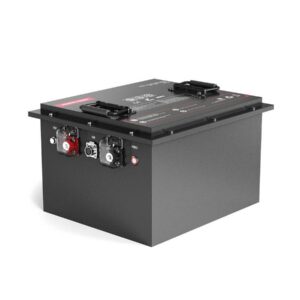
What should you do first when unhooking the jump pack?
When unhooking a jump pack, first turn off its power switch and remove the negative (-) clamp from the discharged battery, followed by the positive (+) clamp. This sequence prevents sparking near flammable gases. Always keep clamps from touching metal surfaces or each other to avoid short circuits. Pro Tip: Wear insulated gloves—even after shutdown, residual current can linger in capacitors.
How to Safely Dispose of and Recycle Car Batteries
Why remove the negative clamp first?
Removing the negative clamp first breaks the circuit path to the vehicle chassis, eliminating spark risks from accidental metal contact. Starting with the positive clamp could complete a circuit through tools or jewelry, triggering arc flashes. Pro Tip: Treat the negative cable like a live wire until fully detached—battery cases often ground to chassis.

Beyond safety basics, the 12V system’s chassis grounding means the negative terminal isn’t just a return path—it’s structurally bonded to the car frame. Removing it first isolates the battery, making subsequent steps safer. For example, leaving the positive connected while removing negative is akin to defusing a bomb’s trigger mechanism before handling explosives. Always prioritize breaking ground connections in DC systems.
What happens if you disconnect clamps in reverse order?
Removing the positive clamp first risks creating a short circuit if the wrench touches chassis metal. This can weld tools to terminals, melt cables, or ignite hydrogen gas from the battery. Pro Tip: Use magnetic clamp covers—they prevent accidental contact during messy roadside jumps.
Practically speaking, reversing the order bypasses the battery’s internal resistance, allowing uncontrolled current flow through the tool. A typical 600A surge can occur in 0.5 seconds, reaching temperatures over 1,000°C. Imagine slicing a pressurized gas line instead of shutting the valve first—that’s the energy release at play. Always follow negative-first protocol unless using isolated lithium jump packs with automatic polarity checks.
| Order | Risk Level | Common Damage |
|---|---|---|
| Negative First | Low | None if done correctly |
| Positive First | High | Welded tools, melted terminals |
Can leaving clamps on too long cause damage?
Yes—over 10 minutes of connection can overcharge the donor battery or stress the discharged unit’s cells. Modern jump packs with auto-shofft mitigate this, but traditional booster cables don’t. Pro Tip: Set a phone timer for 5 minutes—if the car doesn’t start, troubleshoot instead of endlessly charging.
Lithium-based jump packs face voltage compatibility issues when left connected to lead-acid systems. Their higher float voltages (13.6V vs. 12.6V) force continuous current flow, overheating both units. For example, a 2022 NOCO Boost Pro left connected for 30 minutes drained its own cells to 80% DoD, cutting its lifespan by 200 cycles. Always disconnect immediately after successful starts.
Battery Expert Insight
FAQs
Should the car be running when disconnecting?
No—turn off both vehicles to prevent alternator surges. Modern cars with ECUs risk voltage spikes damaging sensors if engines are on during disconnection.
Are gloves mandatory for unhooking?
Not legally, but advised—corroded terminals expose lead and sulfuric acid. Nitrile gloves prevent chemical burns during post-jump cleanup.
